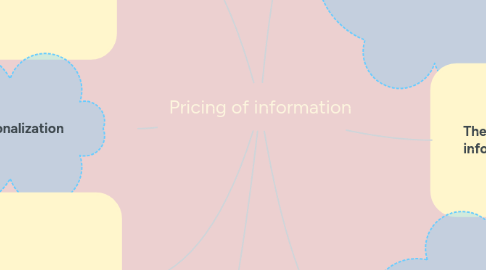
1. Discriminatory Pricing: don't let the product is too simplified
1.1. Microsoft Encarta: mark-down strategy
1.2. Bigbook: adds geographic information systems
1.3. Western publishers: use intellectual property to protect information products
1.4. Cost leadership: increase sales and lower average costs
1.5. First-mover Advantage: seize the market opportunity and develop the leading price strategy
1.5.1. Don't be greedy. Restricted pricing: sacrifice short-term profits to prevent competitors from entering the market
1.5.2. Get tough. Turn the threat of commodities into an advantage
1.5.3. Increase the value of the product
2. Product personalization
2.1. Personalize and customize the product
2.2. Establish profit mechanism
3. Be familiar with the customer
3.1. Sign up and bill
3.1.1. The coupon strategy leads users to sign up
3.1.2. Provide valuable services in exchange
3.2. observe
3.2.1. Monitor user network dynamics and search trails
3.2.2. Using shopping platform to get shopping dynamic
4. Group pricing(Tertiary price discrimination)
4.1. Price sensitive
4.1.1. Offer discounts to students and senior citizens
4.1.2. Localization of information
4.2. The network effect
4.2.1. A user's opinion of a product depends on how many people use it
4.3. lock
4.3.1. Lock in a group of users, they become continuous use of the product users
4.4. Share
4.4.1. sell
4.4.1.1. Academic journals
4.4.2. rent
4.4.2.1. videotape
4.4.3. Digital library
4.4.3.1. infonatics
5. Cost and competition
5.1. The cost of information production is high, but the cost of reproduction is low
5.2. The fixed costs of information are mostly sunk costs
5.3. There is no perfect market competition for information products, and competition will affect the price of information products
5.4. Example: cd-rom phone book, competition will make the marginal cost of the product approach zero
5.5. Classic competitive strategy principles
5.5.1. Differentiated product industry: differentiating products to add value to the original information
5.5.2. Leading enterprises: cost leadership through economies of scale
